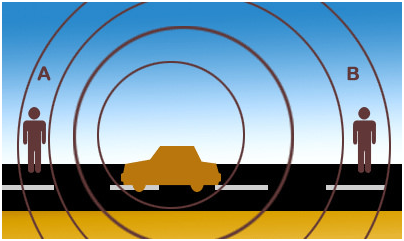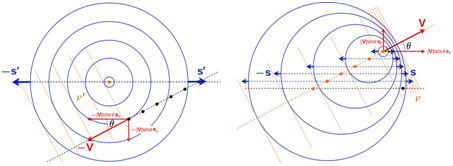Class 11th science physics (waves)
What are the types of waves?
We can witness four types of waves. They are:
- Mechanical Waves- which can exist in material media and follows Newton’s laws.
- Transverse waves are referred to those whose particles oscillate in a perpendicular motion of the direction of propagation of the wave
- Longitudinal waves are referred to those whose particles oscillate along the way of the propagation of the wave
- When the waves move from one point of the medium to another is called progressive wave
Wavelength of a wave
In the case of a progressive wave, the distance between two points in the same phase at that particular time period is known as the wavelength of a wave. The distance is twice the number of two consecutive nodes and antinodes.
Time Period of oscillation
When an element of a medium takes time to move through one complete oscillation then it is called time period.
Principle of superposition of waves
In a medium when multiple waves transverse simultaneously, the displacement is the algebraic sum of the displacements due to each wave. This phenomenon is referred to as the principle of superposition.
Standing waves
When two identical waves moving in opposite directions interfere, it results in a standing wave. These waves are characterized by the zero displacement locations which are fixed and are called as nodes and locations of maximum displacements called as antinodes.
Doppler Effect
The change in the frequency of a wave when the source or the observer or both are moving relative to the medium
Important Questions
- A string of mass 3 kg experiences a tension of 300 N. The stretched string’s length is 20 m. Calculate the time taken by the disturbance to reach the other end when one end is struck with a transverse jerk.
- From a tower of height 400 m, a stone is dropped from the top into the water of the pond nearby. Calculate when the splash is heard at the top and the speed of sound in air is 340m/s (g=9.8 m/s2)
- The length of steel wire is 14 m and the mass is 3 kg. Find out the tension in the wire where the speed of the transverse wave on the wire equals the speed of sound in air at a temperature of 30 degrees= 353 m/s
Doppler effect is the change in frequency or wavelength of a wave in relation to an observer who is moving relative to the wave source. The phenomenon is named after an Austrian physicist named Christian Doppler, who described it in the year in 1842.



What is Doppler Effect?
Let us say that there is no medium between a source and an observer. The light source is moving away from the observer. Then the successive waves have to travel a larger distance as compared to the previous waves to reach the observer. Consequently, the time taken by the waves to reach the observer also increases. This results in the change in the frequency of the wave.
The change in frequency or wavelength of the light wave due to the relative motion between the light source and the observer is called theDoppler effect.
The Doppler effect is also observed in the sound waves. But since the light waves travel in the vacuum as well and the speed of light is very large, the classical Doppler effect cannot be applied here.
Understanding Doppler Effect In Real Life
To understand the Doppler effect let us imagine the following scene. You are standing beside a road and a police car with its siren turned on, drives by you. What do you notice about the sound? The siren’s sound isn’t so loud when it is at a distance, which then reaches a maximum when it is just beside you, diminishing again as it crosses and moves away from you.
Consider another instance. Two people A and B are standing on the road as shown below in the picture.

Which person do you think hears the sound of the revving engine with a greater magnitude? You know that its person A. But why?
This is where we discuss the Doppler Effect or doppler shift. To highlight this effect you should understand the difference between the two situations given below.
Situation 1: How are the pattern of waves formed when you suddenly jump into a pond?
Situation 2: How are the pattern of waves formed when you are walking in a pond?
The image given below highlights the difference of wave patterns in both the situations.

This difference is because the source of the waves in the second case moves. This is what the Doppler Effect is. It is named after the physicist Christian Doppler who proposed this in the 19th century. The Doppler effect is the change of frequency of a wave emitted as observed by an observer moving relative to the source. In this, the frequency received by the observer is higher during approach, identical when the relative positions are the same, and keeps lowering on recession of source. If both the source and observer are moving, the total Doppler Effect is calculated based on both these motions.
Let us say that light waves travel from a source to an observer. In this case, the wave travels the fixed distance across which the source and the observer are located. But there are cases when either of the two is moving, that is, the source is moving relative to the observer, or vice versa. It is in these scenarios that the Doppler effect comes into the picture.
Doppler Effect Formula
In physics, where the speed of the receiver and the source relative to the medium are lower than the velocity of waves, the relationship between emitted frequency f0 and observed frequency f is given by:
where
c: velocity of waves in the medium.
vr: velocity of the source relative to the medium.
vs: velocity of the receiver relative to the medium.
The frequency decreases if either is moving away from the other.
Applications of Doppler Effect
Some doppler effect applications are provided in the points mentioned below:
- Sirens
- Radar
- Astronomy
- Medical Imaging
- Blood Flow Measurement
- Satellite Communication
- Vibration Measurement
- Developmental Biology
- Audio
- Velocity Profile Measurement
Doppler Effect In Light
The Doppler effect also affects the light which is emitted by other bodies in space. If the body is “red shifted” the light waves are spread apart, and it is travelling away from us while if it is “blue shifted,” its light waves are compacted and it is coming towards us. The detailed explanation of the doppler effect in light is given below.
Red Shift and Blue Shift:
- When the light source moves away from the observer, the frequency received by the observer will be less than the frequency transmitted by the source. This causes a shift towards the red end of the visible light spectrum. Astronomers call it as the red shift.
- When the light source moves towards the observer, the frequency received by the observer will be greater than the frequency transmitted by the source. This causes a shift towards the high-frequency end of the visible light spectrum. Astronomers call it as the blue shift.

Doppler Effect In Sound
For sound waves which propagate in a medium, the velocity of the source and the observer are relative to the medium in which the waves are transmitted. The total Doppler effect may, therefore, result from motion of the observer, motion of the source, or motion of the medium. These effects are separately analyzed.
Comments
Post a Comment